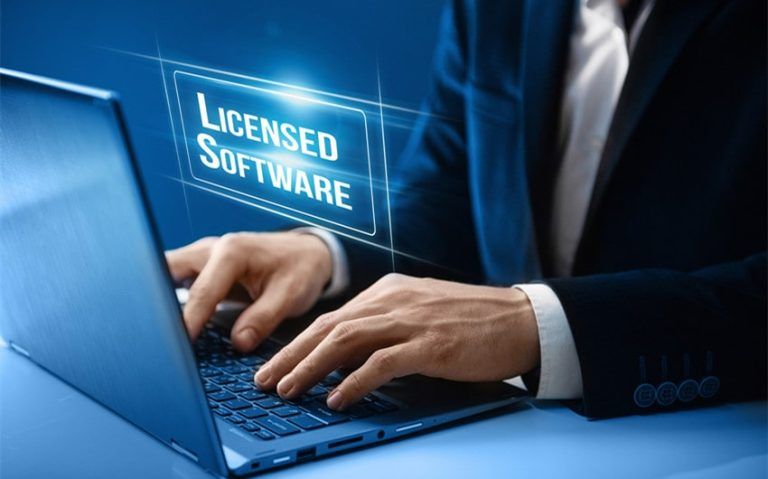What is a License?
A license (software license) is a legal agreement between the software developer and the user, outlining the rights and restrictions associated with the use of the software. Instead of owning the software, users are granted permission to use it under certain terms. There are various types of licenses, ranging from open source licenses that allow users to access and modify the source code, to commercial licenses that require users to pay a fee to use the software.
How Does a License Impact Business?
In the software business, licenses play a crucial role, not only in protecting intellectual property but also in generating a stable revenue stream for the company. By providing legal usage rights, businesses can control the distribution and use of their products, minimizing risks related to copyright infringement. Licenses also enable businesses to offer support, maintenance, and regular updates, enhancing the user experience and ensuring the software remains secure and effective.

Furthermore, using licensed software also enhances professionalism and credibility with clients and partners, while helping to manage and strictly control usage terms to avoid exceeding permitted limits.
Software License
A software license is a legal document that clearly outlines the terms and conditions related to the use and distribution of software. It grants end users the right to use one or more copies of the software without infringing on copyright, while defining the responsibilities of the parties involved in the agreement.
Software licenses typically include terms related to fair use, limitations of liability, warranties, and disclaimers. They also specify protective measures in case the software or its use infringes on third-party intellectual property rights. Software licenses can generally be categorized as proprietary, free, or open source. The differences among these types of licenses lie in the conditions regarding whether users are allowed to distribute or modify the software for future development.

Distinguishing Types of Software Licenses
In the software industry, licenses are primarily divided into two categories based on copyright regulations:
- Free and Open Source Licenses (FOSS): These licenses allow users to access the source code of the software and modify it according to their needs. Open source software is not only provided for free but also permits users to customize and enhance the product, creating opportunities for the community to contribute to and develop the software in their desired way.
- Proprietary Licenses: This type of license grants the right to use the software without allowing users to access or modify the source code. Users only have the rights to use the software under predefined conditions and are generally prohibited from performing activities like reverse engineering to exploit the source code. Proprietary licenses help protect the intellectual property of developers and maintain control over the software product.
However, to further differentiate between open source and proprietary software, we can classify them into five categories:
- Public Domain: Software in this category is completely free and has no copyright restrictions. Users can freely use, modify, and integrate the source code into other applications. However, it should be noted that this software may not meet the quality and security standards required by businesses.
- Lesser General Public License (LGPL): This license allows developers to integrate open source libraries into their software without having to comply with the more stringent terms of a strong copyleft license. Developers can choose any license for their own software but must adhere to the basic requirements of the LGPL for the integrated software.
- Permissive Licenses: These licenses allow for the distribution and modification of software with fewer requirements compared to other licenses. Popular licenses such as Apache, BSD, and MIT fall into this category, requiring clear notices about the license, copyright, and trademarks without imposing the same license on new open source code.
- Copyleft: This type of license requires any distributed or modified software based on the original source code to adhere to the same license terms. This means that any new product containing open source code must comply with the terms of the copyleft license, ensuring consistency and freedom for open source code.
- Proprietary License: This is the most restrictive type of license, prohibiting copying, modifying, or distributing the software. Proprietary licenses protect the intellectual property of the developer and do not allow users to access the source code, ensuring complete control over the software.
Importance and Examples of Software Licenses
Example 1: Floating Licensing - Netflix
Netflix, a video-on-demand service, offers subscription plans that allow users to stream content on multiple devices. With the standard plan, users can stream on up to 2 devices simultaneously, equivalent to two licenses in their license pool. When one device starts streaming, a license is checked out and assigned to that device.
If another user on the same account starts streaming on a second device, the second license is checked out. If a third person tries to stream on a third device, they will be unable to do so because the maximum number of licenses has been reached. Netflix’s licensing system manages licenses flexibly, ensuring strict control over intellectual property.
Example 2: Metered Licensing - Otter
Otter is a prominent speech-to-text software that provides accurate transcriptions when pressing the record button on the app’s main screen. Paid plans are available, but registered users can record and transcribe up to 600 minutes of speech per month for free. A timer is activated when recording starts and stops when the user presses the stop button, meaning users only pay for actual usage time.
The app’s main screen shows the remaining minutes each month and the number of days before the countdown resets. After 600 minutes are used up, users can still access existing transcription projects but cannot make new transcriptions until the minutes are refreshed or a premium license is purchased. Otter is an excellent example of metered licensing, combining convenience with strict control, thereby boosting sales.
Why Software License Matters
Software licenses play a crucial role in defining the rights and obligations of all parties involved, from creators and providers to end users. For software developers, licenses protect their intellectual property and trade secrets based on copyright law while restricting unauthorized modification and distribution of the source code. Furthermore, licenses help minimize the legal liability of providers by clearly specifying the conditions for software use.

For users, a license clarifies the rights and limitations regarding the use of software source code. It establishes rules that users must adhere to, protecting them from copyright infringement claims and limiting legal liability. Additionally, licenses help users maintain a positive relationship with developers and providers while preventing budget overruns by specifying the number of licenses required for the organization.
Current Status of License Usage in Vietnam
In Vietnam, the use of software licenses faces several challenges. According to a report by BSA | The Software Alliance, approximately 78% of software in Vietnam is used without legal licenses, a figure higher than the global average. The cost of licensed software can be very high, potentially reaching tens of thousands of USD per year depending on functionality and the number of users, making it difficult for many businesses and individuals to afford. Although the government has issued various policies and regulations to encourage the use of licensed software, enforcement remains challenging.
However, the shift towards Software as a Service (SaaS) models is helping to reduce initial investment costs and increase flexibility while minimizing the risk of copyright infringement. Industry organizations and associations, such as BSA and the Vietnam Software Association (VINASA), are also actively raising awareness about the use of licensed software and its benefits through outreach and training activities.
Salesforce
Salesforce CRM is one of the leading customer relationship management (CRM) platforms globally, widely used by both large and small organizations around the world. With its flexible features and applications, Salesforce helps businesses enhance customer relationships, optimize the sales process, and drive revenue by providing powerful management tools and insights.
Key features of Salesforce software that support effective business management include: marketing management; customer relationship management; sales management; and integration with other applications and systems.




